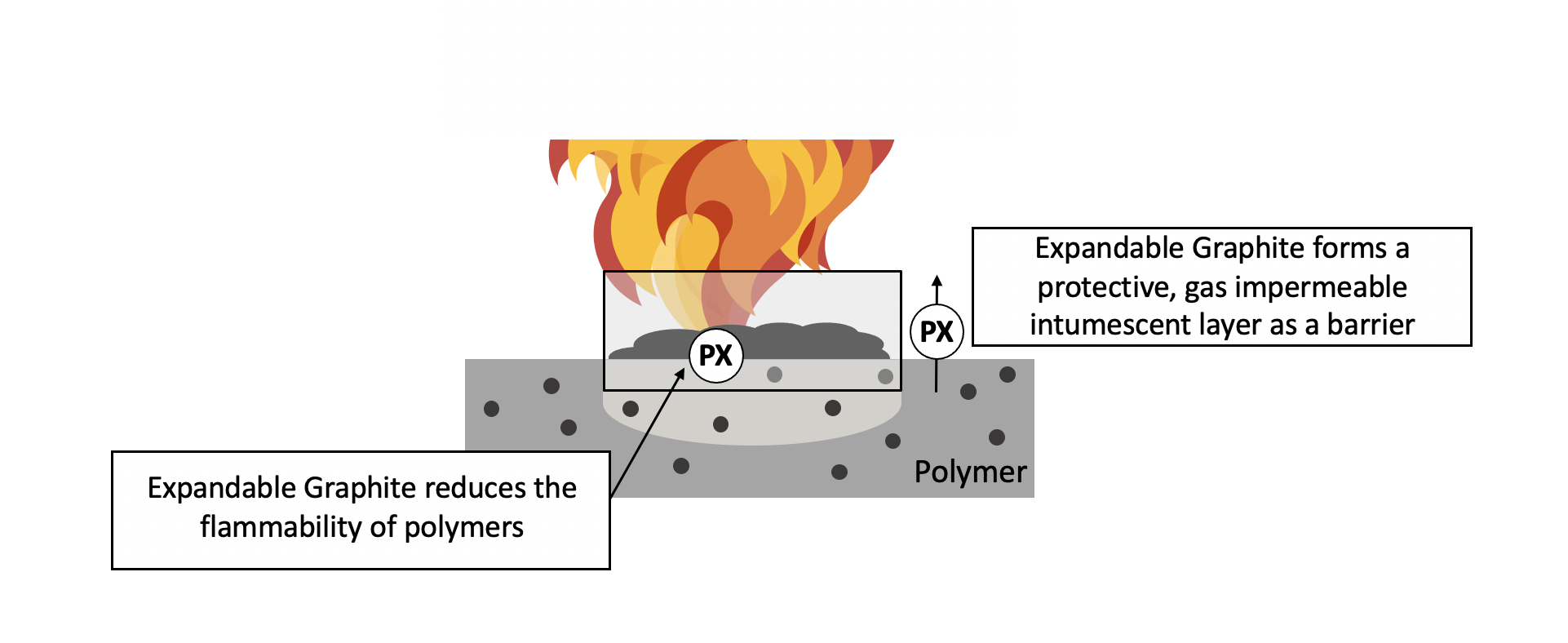Flame retardant is a general term for chemical and mineral substances with differences in their properties, modes of action, toxicology and environmental behaviour. All flame retardant additives do however pursue the same objective:
-
Reducing the flammability of items
and thereby delaying the outbreak of fires
-
Reducing smoke development and preventing the formation of toxic gases
without causing harm to the environment or to health
Expandable graphite reduces the flammability and forms a protective intumescent layer
A wide range of different flame retardant additives is available today. Some flame retardant additives affect the physical process in the course of a fire, which means they cool or dilute the burning material. Other additives form a protective layer, thereby depriving the fire of fuel, while yet other additives reduce the flammability of the component. Expandable graphite combines two modes of action in one additive: the flammability of the component is reduced on the one hand and, on the other hand, expandable graphite forms a protective intumescent layer in case of a fire.

Every industry has its own fire protection classifications and standards that need to be met by a component or an application. This requires an individually tailored formulation of the base material, expandable graphite and, where applicable, additional functional additives. Expandable graphite can be used as the sole flame retardant additive or may be combined with other additives, such as ATH or APP, which act as synergists and further optimise the flame retardant effect.
Application examples for expandable graphite as a halogen-free flame retardant
Expandable graphite has been used successfully in various applications for many years. Especially in the construction sector and the automobile industry, expandable graphite has established itself as a halogen-free flame retardant. New application possibilities are always being added. The most common applications are:

Coatings
Coatings with expandable graphite can protect underlying materials such as textiles or fleece, wood or natural fibre panels, steel and other metals in case of fire.

Foam products
Expandable graphite reduces the combustibility of soft foam products, rigid foam sheets and components, and insulating foams.

Compounds
Expandable graphite can be integrated into classic plastic compounds and master batches, or into bitumen, rubber, silicone, epoxy resin and adhesives.
Your contact person
Christian Conrad
The right additive or special raw material specification exists for every application. Let’s find the appropriate solution together. Our team and I are happy to help you.


